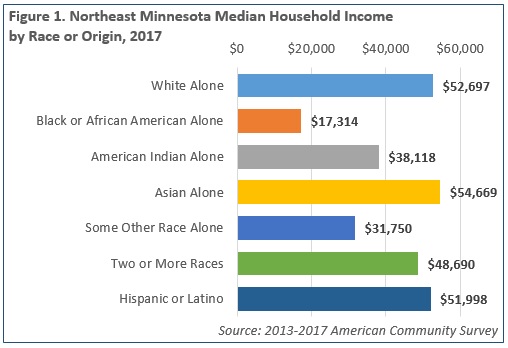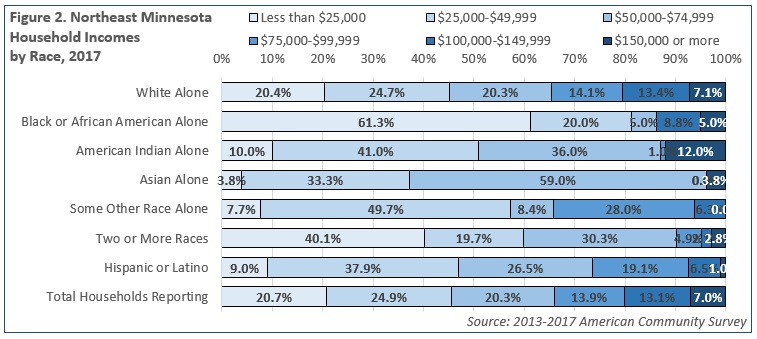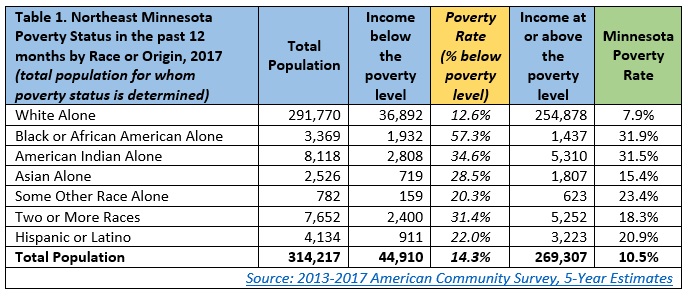 Home to the state's second-largest metro, the Northeast Region has a strong industrial sector, tied largely to the area's abundant natural resources.
Home to the state's second-largest metro, the Northeast Region has a strong industrial sector, tied largely to the area's abundant natural resources.
Most of the manufacturing base centers on mining and forest products industries. More than half of the sector's employment is in paper and machinery manufacturing.
Want the freshest data delivered by email? Subscribe to our regional newsletters.
4/3/2019 4:00:00 PM
Cameron Macht
As detailed in last month’s Local Look blog, incomes were climbing across the Northeast region. Though the rising tide seems to be lifting all boats, there was still a lot of variation by race or origin. Even though it was one of the smallest groups in terms of population, and therefore the margins of error are larger, Asian households reported the highest median household income in Northeast Minnesota at $54,669 in 2017. That was narrowly ahead of the median incomes for white households, which was around $52,700. Black or African American households reported the lowest median incomes, equaling less than one-third of the comparable income for whites (Figure 1).

Over half of households of some other race and nearly two-thirds of black or African American households in the region reported incomes below $25,000 in the most recent American Community Survey estimates, while over 50 percent of American Indian, Asian, Hispanic or Latino, and households of two or more races had incomes below $50,000 in 2017 (Figure 2).


Contact Cameron Macht at 320-441-6596.